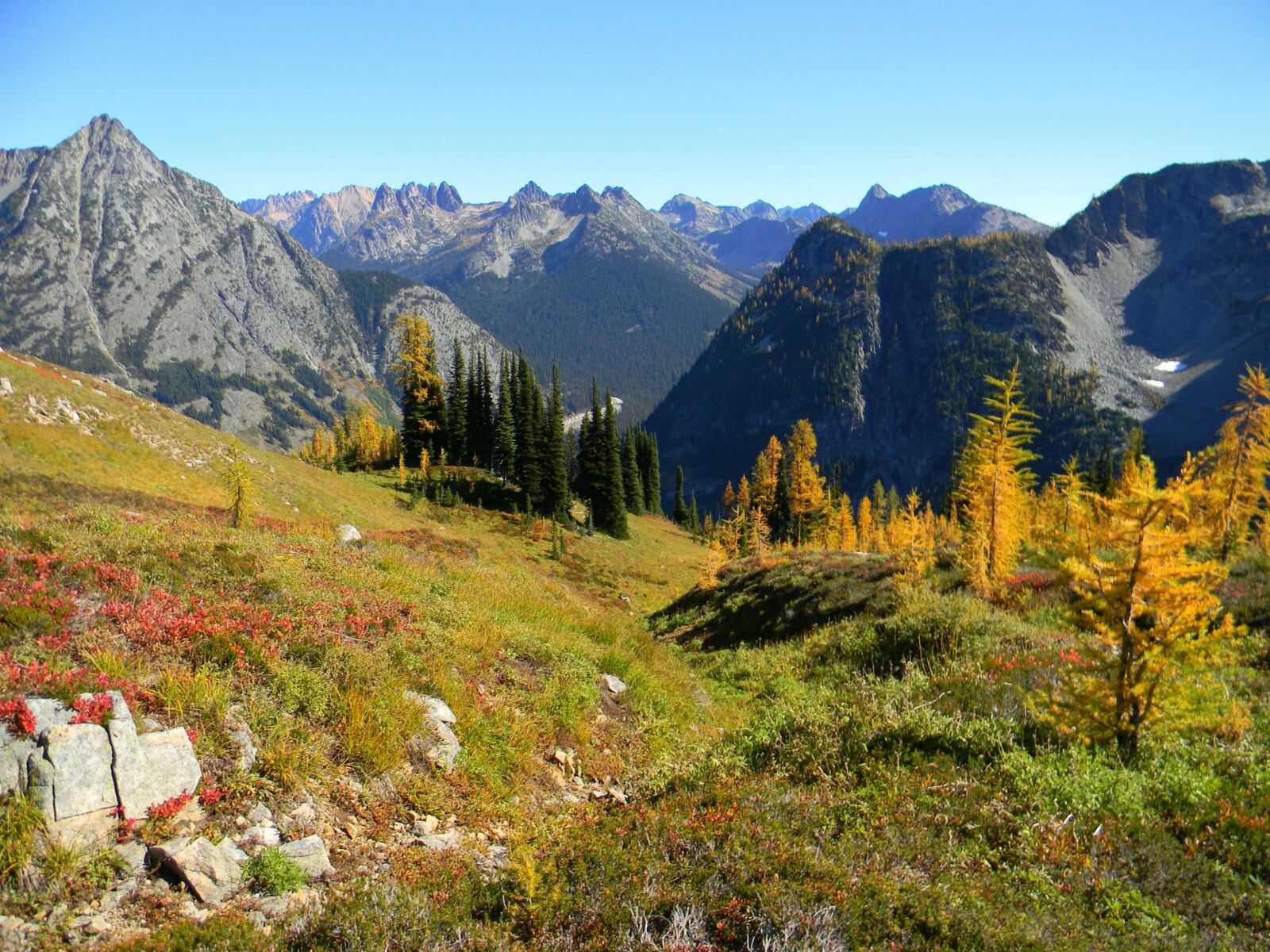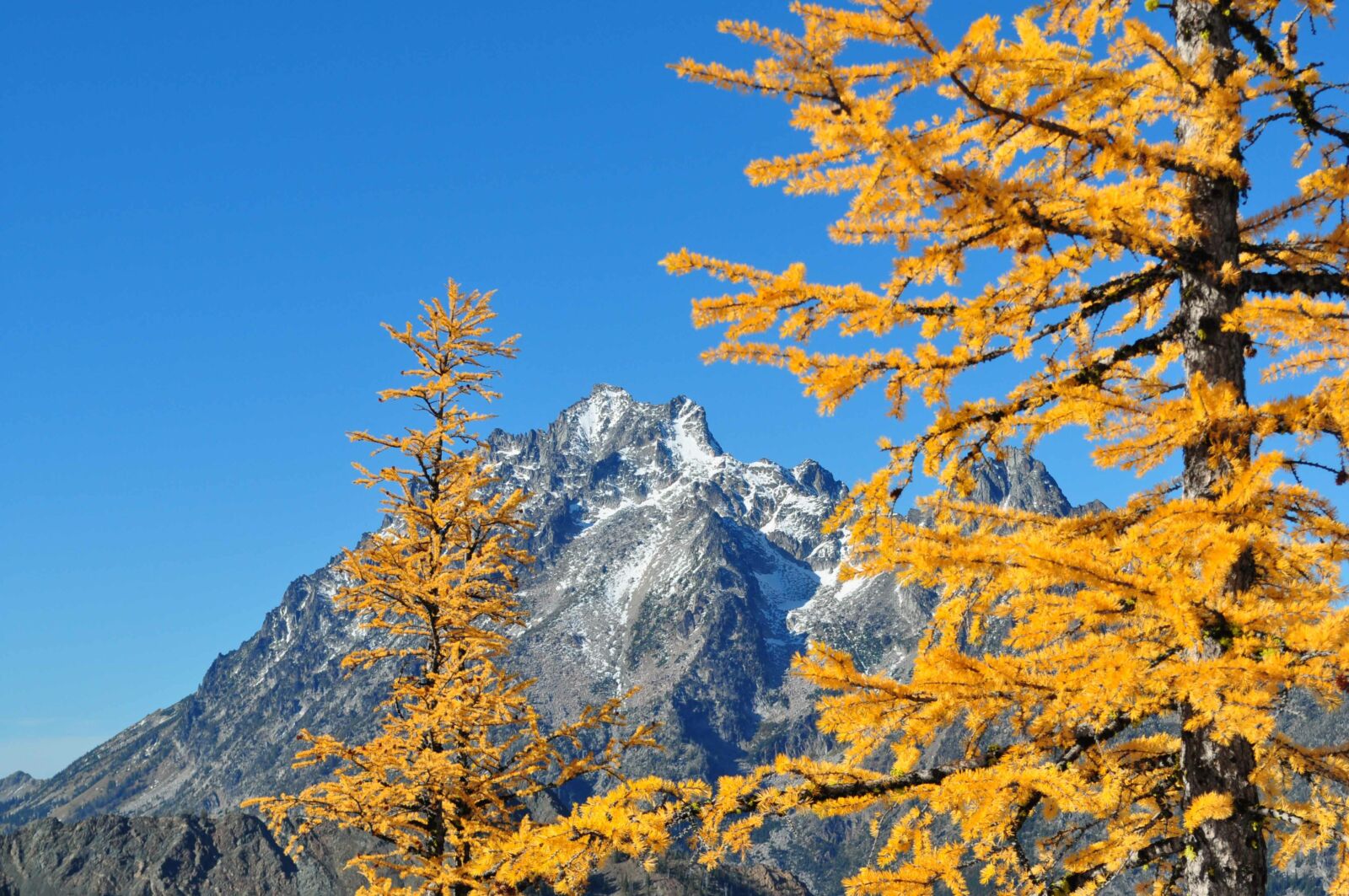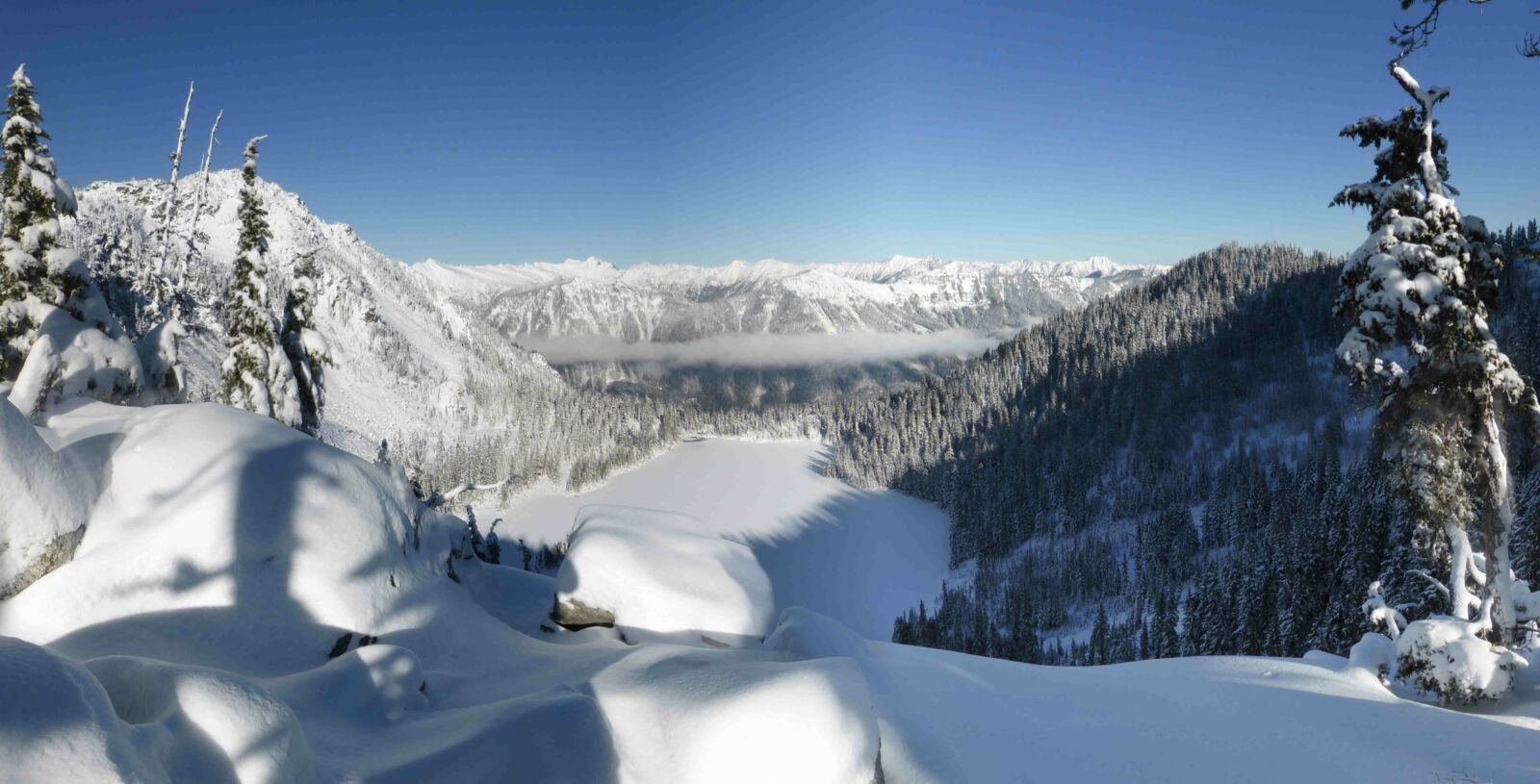The largest National Forest in the Pacific Northwest, the O-W encompasses four million acres that stretch 180 miles from the Canadian border south past Mt. Rainier. From the high, glaciated alpine peaks along the Cascade Crest to the dry, rugged shrubsteppe country that sprawls along its eastern edge, the O-W has it all.
The Forest is bisected by the Cascade Crest, which rises from 1,000 to more than 9,000 feet in elevation. In addition to providing dramatic vistas, the Crest forms a rain shadow. On the western side, more than 70 inches of rain falls annually, while on the eastern edge, less than 10 inches a year drip from the typically sunny skies.
The Cascades’ jagged peaks provide abundant subalpine regions, dominated by subalpine fir, Engelmann spruce, and lodgepole pine trees. The Forest’s eastern slopes contain extensive stands of ponderosa pine, Douglas-fir, western larch, lodgepole pine, and quaking aspen. Wetlands, marshes, and riparian habitats are widespread but are concentrated around water bodies like Sinlahekin Creek and the Similkameen, Methow, and Okanogan Rivers, and several lakes and ponds. Verdant pockets of old-growth can be found scattered across the Forest.
HISTORY
The Okanogan-Wenatchee has a convoluted history. In 1908, the Forest Service created the Wenatchee National Forest, which remained a distinct unit of the National Forest System until it was combined with the Okanogan in 2000. In its early days, nearly 150,000 sheep grazed on the Wenatchee, a significant portion of the entire sheep population in Washington State. Unfortunately for the Forest, sheep are voracious, eating almost every bit of vegetation in site. This constant grazing denuded hillsides, meadows, and riparian areas, and encouraged erosion, invasive weeds, and reduced biodiversity. These effects can still be seen on the Forest today.

The Okanogan National Forest was originally called the Chelan National Forest, and it too was created in 1908. In 1911, the Forest Service split the Chelan, and the Okanogan was created. Nine years later the agency re-combined the Okanogan and Chelan, dropping the Okanogan moniker until 1955 when Okanogan once again became the preferred name.
THE MAJESTIC METHOW
Surrounded by the glacial peaks of the North Cascades and serving as the northern gateway to the vastness of the Okanogan-Wenatchee National Forest, the Methow Valley lures Puget Sounders with its big valleys, open wild spaces, high ridges and beautiful rivers. The Methow region, including the adjacent Pasayten Wilderness Area, is cherished for its scenic beauty, recreation opportunities, wildlife and forested landscapes. For these reasons and for its unique restoration challenges, the NFF selected areas of the Methow that lie on the O-W as a Treasured Landscapes campaign site.
WILDLIFE ABOUNDING AND REBOUNDING
According to the U.S. Fish and Wildlife Service, the Methow River watershed is one of the most intact major drainages in eastern Washington, supporting a diverse assemblage of fish and wildlife species. Nationally, this watershed is one of the few places where threatened and endangered species such as grizzly bears, gray wolves, lynx, bull trout, and salmon co-exist. The Methow, the Twisp and the Chewuch Rivers drain the Methow’s high country into the mighty Columbia River, providing critical spawning and rearing habitat for Chinook salmon, steelhead and bull trout.
The Methow Valley is home to one of the largest populations of lynx in the Lower 48, and the Methow Valley Ranger District was the site of Washington’s first returning wolf pack. The only photo documentation of a grizzly bear was taken here, and even that most elusive of rare forests species—the wolverine—is gradually migrating down from British Columbia, Canada. The Forest Service’s wolverine monitoring program has trapped and tagged numerous individuals and confirmed the first documented den in the North Cascades.

Thanks to another successful reintroduction program, a slightly less charismatic, but equally important species—the beaver—is also making a strong comeback on the landscape. Thousands of the fur-bearing mammals once lived all over the Methow, but decades of harvest resulted in their extirpation. Today, you can spot the busy builders damming creeks, rivers, and hear the slap of their tale in many sites across the Forest. The NFF actively supports this reintroduction program that will have tremendous benefit for streams and watersheds throughout the Forest.
A RECREATION HAVEN
As one might expect, a National Forest with more than four million acres offers incredible recreation opportunities. Add to that vastness towering peaks, abundant snow, healthy populations of fish and wildlife, and it becomes clear why Seattleites flock to the Methow for year-round activities. Fishing, rafting, climbing, hiking, horseback riding and mountain biking are just some of ways you can spend an afternoon. If schussing is your thing, the Methow Valley is renowned for Nordic skiing, boasting more kilometers of groomed Nordic ski trails than any area in the nation.
At over 530,000 acres, the Pasayten Wilderness is the largest Wilderness Area in Washington and one of the most remote areas in the entire North Cascades. More than 600 miles of trails provide access to the Pasayten Wilderness, many of them deceptively gentle at the start and progressively labor-intensive as they crawl up endless switchbacks into the higher country. The Pacific Crest Trail (PCT) crosses the area north-south for 32 miles. The Boundary Trail moves north from the southeast corner to ramble near the Canadian border for a total of more than 73 miles before eventually joining the PCT.
A FRAGILE FOREST
Heavy recreation use along the North Cascades Highway (Highway 20) is slowly but surely degrading the sensitive subalpine habitat that distinguishes this region. The Pasayten, although remote, is still recovering from years of high levels of sheep grazing that occurred nearly a century ago. Decades of fire suppression have resulted in thickly forested landscapes prone to large-scale fire. A changing climate is affecting species such as the whitebark pine. These sentinels of the high country have historically been safe from insects and disease; they thrive at elevations above 5,000 feet where pine beetles haven’t been able to survive until warming temperatures began shifting their distribution. Additionally, many rivers and watersheds have been impacted by past management actions. Restoring these critical instream and riparian habitats is essential to the future success of anadromous and resident fish populations.

Today’s healthy populations of charismatic mammals are the direct result of concerted reintroduction and monitoring efforts, yet this work is not done. Fortunately, efforts like our Treasured Landscapes campaign provide managers with some optimism about the future. In addition to the beaver reintroduction noted above, the NFF is also funding a long-term wolverine monitoring program to help scientists better understand their population distribution and habitat needs as wolverine reestablish home ranges in the region. The alpine regions of the North Cascades provide critical habitat for a species that is dependent on snowfields and glaciers, making this area crucial for the species’ future survival.
Few places in our country offer such an abundance of recreational opportunities as the Okanogan-Wenatchee. Whether summiting a technical mountain peak, gliding along miles of perfectly groomed Nordic ski trails, or simply stopping to take in the views along the world famous North Cascades Highway, the Okanogan-Wenatchee offers something for everyone. If you’re ever in the Pacific Northwest and feel like getting away from it all, the O-W is your express ticket to solitude. So enjoy the views, the quiet, and the varied terrain. Just don’t tell anyone.

